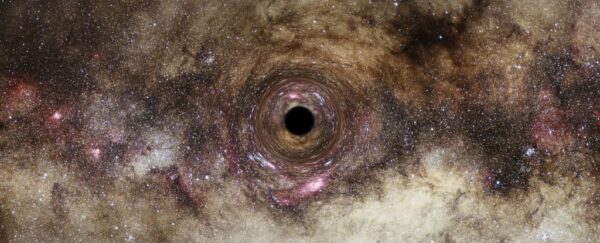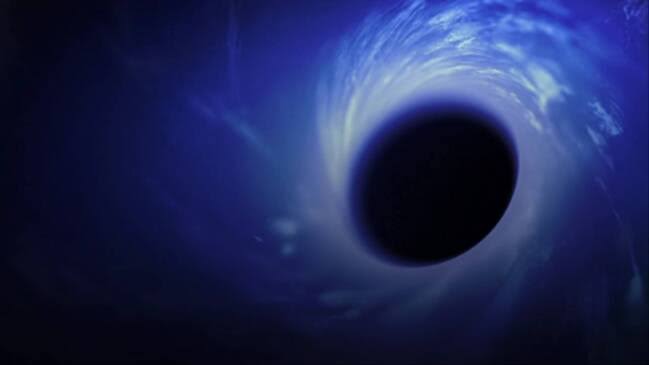Ultramassive Black Hole discovered to be 32.7 Billion times more massive than Sun

Not content with being supermassive, the monster is an ultramassive black hole, clocking in at around 32.7 billion times the mass of the Sun
The bending of light as its path veers around a giant, invisible mass has revealed the presence of one of the biggest black holes yet detected in the Universe.
In a galaxy at the center of a massive cluster named Abell 1201, some 2.7 billion light-years away, lurks a cosmic colossus. Not content with being supermassive, the monster is an ultramassive black hole, clocking in at around 32.7 billion times the mass of the Sun.
The new figure exceeds previous estimates by at least 7 billion solar masses, demonstrating the power of curved light for measuring masses with precision.
“This particular black hole, which is roughly 30 billion times the mass of our Sun, is one of the biggest ever detected and on the upper limit of how large we believe black holes can theoretically become, so it is an extremely exciting discovery,” explains physicist James Nightingale of Durham University in the UK.
There are a lot of black holes out there in the Universe, but unless they’re actively accreting material – a process that produces a great deal of light as the material heats up prior to falling into the black hole – they’re not easy to spot. Black holes themselves emit no light we can detect, so we have to find them by looking for the effect they have on stuff around them.
One way we can find these black holes is looking for an effect called gravitational lensing. This occurs when space-time itself is warped by mass; imagine space-time as a rubber sheet, and the mass as a heavy weight on it. Any light traveling through that region of space-time has to travel along a curved path, and that can look very interesting to an observer watching from afar.
The light warps, stretches, and often becomes magnified, which means we receive distorted images of objects in the background, such as distant galaxies. This lensing mass can be small, like a stellar-mass black hole, in which case the phenomenon is known as microlensing; or large, like a cluster of galaxies. Astronomers can study this warped light to probe the properties of the lensing mass.

The central galaxy, or brightest cluster galaxy (BCG) of Abell 1201, is a large, diffuse elliptical galaxy well-known as a strong gravitational lens. A galaxy far beyond the BCG appears alongside it as an elongated smear, like an eyebrow closely wrapped around its outskirts.
This smear was discovered in 2003; in 2017, astronomers found a second, fainter smear, even closer to the galactic center.
This implies, astronomers proposed, the presence of a very large black hole at the center of the BCG, but the data available was not detailed enough to resolve the central mass, or reveal more about what was in there.
Nightingale and his colleagues not only had access to more recent observations, but devised the tools to understand them. They conducted hundreds of thousands of simulations of light moving through the Universe, altering the mass of the black hole at the galaxy’s center, looking for results that replicate the lensing we observe with Abell 1021 BCG.
All but one of their models preferred a massive black hole at the center of the galaxy; and the best fit for the mass of that black hole was 32.7 billion times the mass of the Sun. That pushes it well into ultramassive territory, black holes more massive than 10 billion Suns, and close to the theoretical upper limit for black hole masses of 50 billion Suns.
It’s also a mass that puts Abell 1021 BCG’s black hole in the top 10 most massive black holes we’ve discovered to date. The event horizon’s diameter would span more than 1,290 astronomical units. For context, Pluto’s distance from the Sun is a mere 40 astronomical units. It’s mind-blowing to think about.
The properties of Abell 1201 as a gravitational lens are pretty special, and it’s possible that the detailed measurement of the mass of the black hole in the BCG would not be quite so achievable in other circumstances, but Nightingale’s team is confident that their methods have promise for detecting and weighing other black holes in the distant Universe.
“Gravitational lensing makes it possible to study inactive black holes, something not currently possible in distant galaxies,” Nightingale says.
“This approach could let us detect many more black holes beyond our local Universe and reveal how these exotic objects evolved further back in cosmic time.”
And perhaps offer some clues as to how they manage to grow as large as they do.

